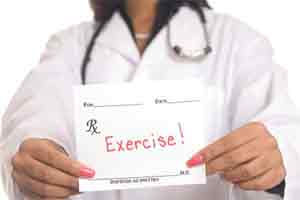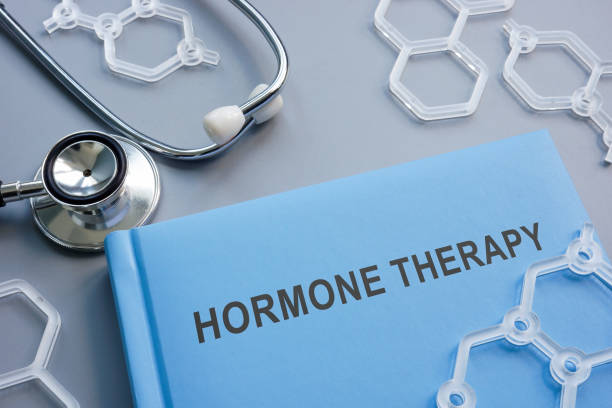“Prescription” to sit less, move more advised for mildly high blood pressure & cholesterol
A “prescription” to sit less and move more is the optimal first treatment choice for reducing mild to moderately elevated blood pressure and blood cholesterol in otherwise healthy adults, according to the new American Heart Association scientific statement published in the American Heart Association’s journal Hypertension.
“The current American Heart Association guidelines for diagnosing high blood pressure and cholesterol recognize that otherwise healthy individuals with mildly or moderately elevated levels of these cardiovascular risk factors should actively attempt to reduce these risks. The first treatment strategy for many of these patients should be healthy lifestyle changes beginning with increasing physical activity,” said Bethany Barone Gibbs, Ph.D., FAHA, chair of the statement writing group and associate professor in the department of health and human development and clinical and translational sciences at the University of Pittsburgh in Pittsburgh, Pennsylvania.
An estimated 21% of U.S. adults, about 53 million, have systolic blood pressure between 120-139 mm Hg or diastolic blood pressure between 80-89 mm Hg; both values are abnormally high. Individuals in this range who have an otherwise low risk of heart disease or stroke meet the American College of Cardiology (ACC)/American Heart Association (AHA) High Blood Pressure Guideline criteria for lifestyle-only treatment for elevated blood pressure.
Likewise, the scientific statement authors estimate that 28% of U.S. adults, or about 71 million, have an LDL cholesterol score above 70 mg/dL and otherwise meet criteria for low risk of heart disease or stroke. These people would meet the2018 AHA/ACC Cholesterol Treatment Guidelines criteria for lifestyle-only treatment. Lifestyle changes highlighted in the blood pressure and cholesterol guidelines include increased physical activity, weight loss, improving diet, stopping smoking and moderating alcohol intake.
“Increasing physical activity can help lower blood pressure and cholesterol, along with many other health benefits.” Gibbs said. Physical activity also has benefits beyond cardiovascular health, including a decreased risk of some cancers, improved bone, brain and mental health, and better sleep.
Increasing physical activity results in clinically meaningful reductions in systolic and diastolic blood pressure, typically an average reduction of 3 or 4 mm Hg. Similar improvements are seen with blood cholesterol. For example, increased physical activity typically decreases LDL cholesterol by 3 to 6 mg/dL.
The statement highlights research concluding that physically active people have a 21% lower risk of developing cardiovascular disease and a 36% lower risk of death from cardiovascular diseases compared to those who are not physically active.
To improve health, the U.S. Department of Health and Human Services 2018 Physical Activity Guidelines for Americans suggest individuals participate in either a cumulative 150 minutes of moderate intensity aerobic exercise, or 75 minutes of vigorous aerobic activity weekly plus two or more strength training sessions each week.
However, there is no minimum amount of time to receive benefits from physical activity. “Every little bit of activity is better than none,” said Gibbs. “Even small initial increases of 5 to 10 minutes a day can yield health benefits.”
The statement provides suggestions for clinicians to provide exercise “prescriptions” such as patient counselling, incorporating health behavior professionals (e.g., health coaches) and connecting patients to local resources like community centers to help meet their physical activity needs.
According to the statement, prescribing exercise includes:
Screening patients about physical activity at every interaction, as recommended by the American College of Sports Medicine’s ‘Exercise is Medicine’ campaign.
Clinicians can ask patients to report their physical activity with a few questions or by using a wearable device.
Providing ideas and resources for supporting patients to improve and sustain regular physical activity;
Meeting patients where they are by exploring activities that the patient enjoys and provide ideas for early success; and
Encouraging and celebrating small increases in physical activity, such as walking more or taking the stairs.
“In our world where physical activity is increasingly engineered out of our lives and the overwhelming default is to sit – and even more so now as the nation and the world is practicing quarantine and isolation to reduce the spread of coronavirus – the message that we must be relentless in our pursuit to ‘sit less and move more’ throughout the day is more important than ever,” said Gibbs.
Source: American Heart Association
Full bibliographic information
Physical Activity as a Critical Component of FirstLine Treatment for Elevated Blood Pressure or Cholesterol: Who, What, and How? – A Scientific Statement From the American Heart Association
Hypertension. 2021;77:00–00. DOI: 10.1161/HYP.0000000000000196





